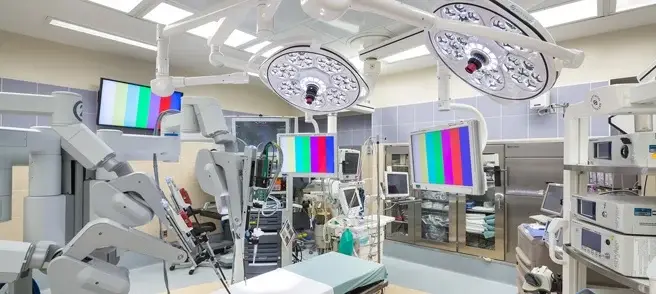
.webp?width=569&name=10766-020_004_Hubspot%20(1).webp)
Over the past several years, regulators have given more attention to humidity levels in operating rooms and central sterile processing departments. Facilities personnel are often challenged by fluctuations in humidity.
When it’s too low, humidity can cause static electricity discharge, and consequently, potential harm to patients or medical equipment. On the other hand, condensation can occur if the humidity is too high, which can lead to the unwanted formation of undesirable micro-organisms In addition, some medical equipment suppliers have strict tolerances on allowable humidity levels in the packaging of sterile surgical instruments. If the humidity is too low or too high, the packaging may fail, potentially compromising the cleanliness of the package contents. Some suppliers provide wall-mounted monitors that provide medical personnel with an immediate readout of current temperature and humidity levels so that the medical staff can see whether or not the environment complies with the requirements.
Here are 4 things to consider if your facility is having issues with humidity:
Is your HVAC system equipped with humidity control?
Many older HVAC systems have been designed to control only temperature, not humidity. If your HVAC system wasn’t designed to control humidity, it’s a safe bet that the space humidity will be outside the humidity compliance range. Sometimes simple “fixes” are possible, other times a completely new system is needed in order to maintain and monitor humidity levels in your facility.
Can you live with slightly higher indoor temperatures in the summer?
Outdoor air has the biggest impact on indoor humidity. Ventilation systems bring in outdoor air and heat or cool it before they deliver it to the rooms they serve. The amount of water vapor outdoor air can vary widely depending on the weather. In the summer, many HVAC systems cool down the air to 55 degrees F and moisture is condensed out of the air. As it leaves the HVAC unit, it is often close to 100% relative humidity. If it’s warmed up to 75 degrees F, the relative humidity will be close to 50%, thereby meeting compliance. If it’s only warmed up to 68 degrees F, the resulting relative humidity will be 60%, which is the upper limit of the compliance range.
Can you live with slightly cooler indoor temperatures in the winter?
If you have functioning humidifiers in your HVAC system, it will take 27% more water and energy to maintain a space at 75 degrees F/30% relative humidity than it will to maintain the same space at 68 degrees F/30% relative humidity. For most spaces, a room temperature setpoint of 72 degrees F (+ or- 2 degrees F) should satisfy most customers and make humidity control easier.
Are your HVAC systems capable of simultaneously providing the temperatures and humidity levels required by patients and staff?
Finding the right balance of comfort and safety, with regards to humidity, can be challenging. To find out if your HVAC systems are capable of simultaneously providing the correct temperature and humidity levels, conduct a system assessment including system performance data for annual extremes of high and low outdoor humidity. Once you have that information, you can investigate how the various parts of the system are operating, fix what’s not working and make plans to modify or replace systems or equipment that lack the capacity to meet current standards.
For more information regarding Peter Basso Associates, go to our homepage at: http://www.peterbassoassociates.com/
For additional information on our Healthcare Design Group, go to: https://www.peterbassoassociates.com/portfolio/healthcare-lab
These Stories on Health Care
Comments (2)